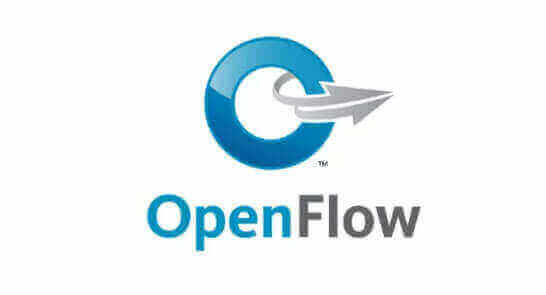
OpenFlow 初學之路(四) Meter Table 基本設定與操作
本篇簡單介紹基本的 Meter Table 建立,以及透過 Mininet 需要的設定,並且也會進行流量的測試
沒看過前幾篇的可以點這邊:
- OpenFlow 初學之路(一) SDN、OpenFlow 簡介
- OpenFlow 初學之路(二) 實作環境架設 OpenDaylight、Mininet
- OpenFlow 初學之路(三) Flow Table 基本設定與操作
拓樸環境建立
sudo mn --topo single,2 --mac --switch ovsk --controller remote,ip=192.168.xx.xxx,port=6633 -x --ar
先建一個跟上次一樣的拓樸來用,一樣基本上 host 間一開始是沒辦法互聯
不過除此之外 mininet 還需要特別改個模式才能正常使用 meter 的功能,輸入下面指令:
sh ovs-vsctl set bridge s1 datapath_type=netdev
Meter
Openflow 提供一個 Meter 的功能,用途在於限制該 Flow 的流量上限,設計上需要先針對 Meter 的規則建立一張表,在建立 Flow Entry 時只需要指定想要套用的 Meter 表,就能夠讓通過這個 Flow Entry 的流量被限制
對照組
既然要進行流量限制的測試,那首先要有正常情況的對照組來才可以,這邊對照組的 Flow Table 設定可以參考前篇文章,基本兩個 host 互通就可以了
不過測速這邊我們需要用到一個工具 iperf,這是在 CLI 下用的測速工具,首先在 h2 的 xterm 裡啟動一個 iperf 的 server
iperf -s
然後再從 mininet 的 CLI 下從 h1 到 h2 進行測速:
h1 iperf -c h2 -i 1 -t 15
參數的意義是,每 1 秒測一次,測速時間為 15 秒,測速的結果會 output 出來到 terminal 上
不過這邊筆者在進行的時候有遇到 iperf 沒辦法連通的情況,這邊請先確認 h1 ping h2 是暢通的,然後再進行以下指令設置:
s1 ethtool -K enp0s3 tx off
h1 ethtool -K h1-eth0 tx off
h2 ethtool -K h2-eth0 tx off
設定好之後應該可以成功使用 iperf 測速,並且看到以下輸出:
mininet> h1 iperf -c h2 -i 1 -t 15
------------------------------------------------------------
Client connecting to 10.0.0.2, TCP port 5001
TCP window size: 85.3 KByte (default)
------------------------------------------------------------
[ 3] local 10.0.0.1 port 56366 connected with 10.0.0.2 port 5001
[ ID] Interval Transfer Bandwidth
[ 3] 0.0- 1.0 sec 22.5 MBytes 189 Mbits/sec
[ 3] 1.0- 2.0 sec 20.9 MBytes 175 Mbits/sec
[ 3] 2.0- 3.0 sec 20.0 MBytes 168 Mbits/sec
[ 3] 3.0- 4.0 sec 20.8 MBytes 174 Mbits/sec
[ 3] 4.0- 5.0 sec 18.5 MBytes 155 Mbits/sec
[ 3] 5.0- 6.0 sec 16.0 MBytes 134 Mbits/sec
[ 3] 6.0- 7.0 sec 18.4 MBytes 154 Mbits/sec
[ 3] 7.0- 8.0 sec 19.5 MBytes 164 Mbits/sec
[ 3] 8.0- 9.0 sec 21.0 MBytes 176 Mbits/sec
[ 3] 9.0-10.0 sec 19.0 MBytes 159 Mbits/sec
[ 3] 10.0-11.0 sec 16.2 MBytes 136 Mbits/sec
[ 3] 11.0-12.0 sec 18.2 MBytes 153 Mbits/sec
[ 3] 12.0-13.0 sec 21.0 MBytes 176 Mbits/sec
[ 3] 13.0-14.0 sec 19.6 MBytes 165 Mbits/sec
[ 3] 14.0-15.0 sec 19.1 MBytes 160 Mbits/sec
[ 3] 0.0-15.0 sec 291 MBytes 162 Mbits/sec
可以看到平均大概在 160 Mbits/sec 左右,那下面我們就來實際測試套用到 meter 之後的流量差異
Meter Table 建立
那首先就來建一個 Meter Table,一樣我們透過 OpenDaylight 的 API:
/*
PUT http://localhost:8181/restconf/config/opendaylight-inventory:nodes/node/openflow:1/flow-node-inventory:meter/1
Basic Auth: admin/admin
*/
// Request Body:
{
"flow-node-inventory:meter": {
"meter-id": "1",
"meter-name": "meter test",
"flags": "meter-kbps",
"meter-band-headers": {
"meter-band-header": [
{
"band-id": 0,
"drop-rate": 500,
"drop-burst-size": 0,
"meter-band-types": {
"flags": "ofpmbt-drop"
}
}
]
}
}
}
參數相較於 flow entry 簡單很多,主要控制流量大小的就是 drop-rate 這個欄位,單位是 Kbps,這邊我們設定的是 500 Kbps,也就是 500 Kbps 的流量就會被 drop 掉
API 發送成功後可以用以下指令檢閱 switch 的 meter table 有沒有正確新增
sh ovs-ofctl -O openflow13 dump-meters s1
然後 flow entry 的設定也要小改一下,讓流量經過 meter table 之後才會被限速:
/*
PUT http://localhost:8181/restconf/config/opendaylight-inventory:nodes/node/openflow:1/flow-node-inventory:table/0/flow/1
Basic Auth: admin/admin
*/
// Request Body:
{
"flow-node-inventory:flow": [
{
"id": "1",
"table_id": 0,
"priority": 2,
"hard-timeout": 1200,
"installHw": false,
"flow-name": "h1 to h2",
"strict": false,
"match": {
"in-port": 1,
"ethernet-match": {
"ethernet-destination": {
"address": "00:00:00:00:00:02"
}
}
},
"instructions": {
"instruction": [
{
"order": 0,
"meter": {
"meter-id": 1
}
},
{
"order": 1,
"apply-actions": {
"action": [
{
"order": 0,
"output-action": {
"output-node-connector": 2,
"max-length": 60
}
}
]
}
}
]
},
"idle-timeout": 3400
}
]
}
記得 h2 -> h1 的 flow entry 也要改下,然後同樣輸入上面的 iperf 指令,得到結果:
mininet> h1 iperf -c h2 -i 1 -t 15
------------------------------------------------------------
Client connecting to 10.0.0.2, TCP port 5001
TCP window size: 85.3 KByte (default)
------------------------------------------------------------
[ 3] local 10.0.0.1 port 56374 connected with 10.0.0.2 port 5001
[ ID] Interval Transfer Bandwidth
[ 3] 0.0- 1.0 sec 419 KBytes 3.43 Mbits/sec
[ 3] 1.0- 2.0 sec 94.7 KBytes 776 Kbits/sec
[ 3] 2.0- 3.0 sec 63.6 KBytes 521 Kbits/sec
[ 3] 3.0- 4.0 sec 0.00 Bytes 0.00 bits/sec
[ 3] 4.0- 5.0 sec 63.6 KBytes 521 Kbits/sec
[ 3] 5.0- 6.0 sec 63.6 KBytes 521 Kbits/sec
[ 3] 6.0- 7.0 sec 63.6 KBytes 521 Kbits/sec
[ 3] 7.0- 8.0 sec 63.6 KBytes 521 Kbits/sec
[ 3] 8.0- 9.0 sec 63.6 KBytes 521 Kbits/sec
[ 3] 9.0-10.0 sec 63.6 KBytes 521 Kbits/sec
[ 3] 10.0-11.0 sec 63.6 KBytes 521 Kbits/sec
[ 3] 11.0-12.0 sec 63.6 KBytes 521 Kbits/sec
[ 3] 12.0-13.0 sec 0.00 Bytes 0.00 bits/sec
[ 3] 13.0-14.0 sec 63.6 KBytes 521 Kbits/sec
[ 3] 14.0-15.0 sec 63.6 KBytes 521 Kbits/sec
[ 3] 0.0-15.4 sec 1.18 MBytes 647 Kbits/sec
雖然有一些輸出怪怪的,但大致的平均速度也是落在 500 kbits/sec 左右,可以知道 meter 是有在正常運作,至此算是完成了這一次的 demo
結論
meter 在 demo 的時候有遇到比較多的障礙是在環境建置上,包含 mininet 的模式設定跟 iperf 不通的問題,主要也想把這些流程筆記下來,不過寫到這邊好像有點越寫越心虛,似乎真的要多補一點背景知識才對,不過還是想先快點記錄下來,生怕會遺忘這些流程,下篇預計撰寫 group 的部分,應該也是照這個模式,搭配實做跟 demo 驗證